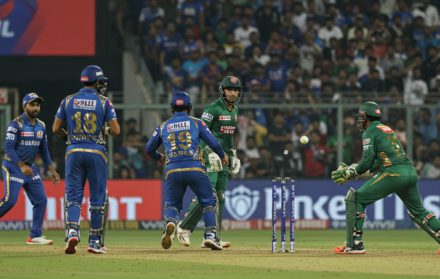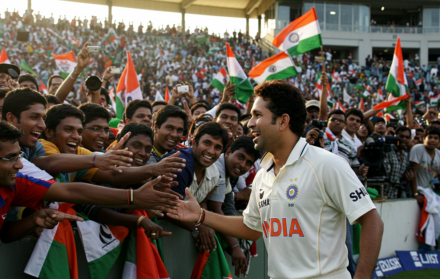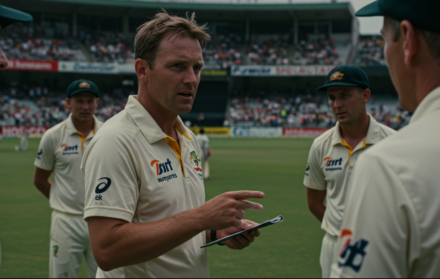
Cricket Coaching Techniques for Kids
Welcome to our guide on cricket coaching techniques for kids, where we’ll explore effective methods to introduce and develop young players in the exciting world of cricket. Cricket is a fantastic sport for children, offering a range of physical, mental, and social benefits.
Whether your child is a budding batsman, a talented bowler, or simply eager to learn, we’ve compiled a range of coaching techniques to help them develop their skills and passion for the game.
Before diving into coaching techniques, it’s essential to ensure that children have the right equipment to play safely and effectively. Explore our guide on cricket equipment suitable for kids to learn about the essential gear your child will need to get started.
Additionally, planning a cricket-themed birthday party can be a fun and memorable way to celebrate your child’s love for the sport. Discover creative ideas and inspiration for hosting a cricket-themed celebration with our guide on cricket-themed birthday party ideas.
Creating a safe and inclusive environment is paramount when coaching kids in cricket. Learn about suitable venues and stadiums for kids’ cricket matches and practices with our guide on cricket venues and stadiums for kids and explore the importance of inclusivity and diversity in kids’ cricket. Parental involvement is also crucial for supporting children in their cricket journey, so be sure to check out our tips on parental involvement in kids’ cricket.
When it comes to coaching techniques, safety should always be a top priority. Familiarize yourself with safety guidelines for kids playing cricket to ensure that practices and matches are conducted in a safe and supervised manner. Additionally, teaching cricket to kids requires patience, creativity, and effective communication. Explore our guide on teaching cricket to kids for tips and strategies to engage young players and help them develop their skills.
Finally, building a strong team spirit and camaraderie among players is essential for fostering a love for the game. Learn about forming and managing a cricket team for kids and discover the joys of coaching young athletes as they learn and grow both on and off the field. With the right coaching techniques and support, children can develop a lifelong passion for cricket and enjoy the many benefits it offers.
Proper Batting Technique

Proper batting technique is crucial for young cricket players to develop skills and perform effectively. Kindly adhere to the following steps for accurate batting technique:
1. Stance: Commence with a well-balanced and relaxed stance, keeping your feet shoulder-width apart and parallel to the crease. Maintain slightly bent knees and evenly distribute your weight.
2. Grip: Grasp the cricket bat with both hands close together on the handle. Employ a firm grip, avoiding excessive tightness.
3. Backswing: Elevate the bat towards your back shoulder, keeping it close to your body and parallel to the ground.
4. Front foot movement: As the bowler releases the ball, take a small step forward with your front foot towards the line of delivery. This will assist you in meeting the ball at the correct time and position.
5. Head position: Keep your head still and level, concentrating your eyes on the bowler’s hand as they release the ball. This will aid in assessing the speed and length of the delivery.
6. Downswing: Lower the bat in a controlled arc, making sure your eyes remain on the ball and aiming for the middle of the bat.
7. Follow through: After making contact with the ball, continue the bat’s trajectory towards the target area while maintaining a balanced position.
Remember, practice is essential for enhancing your proper batting technique. Dedicate time to refining your footwork, timing, and shot selection in order to become a proficient batsman. With dedication and proper coaching, you can excel and refine your skills in cricket.
Bowling Techniques
When it comes to bowling techniques in cricket, there are various aspects to consider in order to improve accuracy and effectiveness on the field.
1. Grip: A proper grip is essential for a successful bowling technique. The ball should rest comfortably in the fingers, with the seam positioned for swing or seam movement.
2. Run-up: The bowler’s initial approach before releasing the ball is called the run-up. Maintain a smooth and balanced run-up to build momentum for a powerful delivery.
3. Delivery stride: The final movement before releasing the ball is the delivery stride. Ensure a controlled and rhythmic stride in a front-on position for maximum power.
4. Arm position: The position of the bowling arm is crucial for accuracy and control. Align it with the target, and position the wrist for the desired delivery (yorker, bouncer, or slower ball).
5. Follow through: The completion of the bowling action is the follow-through. Maintain a balanced and controlled follow-through, landing on the front foot and transitioning smoothly into fielding position.
Note that mastering these bowling techniques requires consistent practice and dedication. By focusing on grip, run-up, delivery stride, arm position, and follow-through, young cricketers can enhance their bowling skills and contribute to their team’s success.
Fielding and Catching Drills

Fielding and catching drills are crucial for the development of cricket skills and coordination. These drills specifically target the improvement of players’ ability to effectively catch the ball and field. Below are some highly effective fielding and catching drills:
1. Drop and Dive Drill: To enhance reflexes and diving skills, release a ball from a height and dive to catch it before it hits the ground.
2. Boundary Catching Drill: By arranging cones to simulate the boundary line, practice taking catches near the boundary while paying attention to balance and technique.
3. Catching in Pairs: One player throws the ball to another using various techniques such as underarm, overarm, or lofted throws. This drill helps develop catching skills and accuracy.
4. Reaction Time Drill: Players stand close together in a line while using a tennis ball or a softer cricket ball. One player randomly throws the ball to another, who must react quickly to catch it.
5. High Catching Drill: Use a ladder or a raised platform to throw the ball high up in the air. Players practice catching the ball at its highest point, improving both catching technique and hand-eye coordination.
6. Ground Fielding Drill: Set up cones in a grid formation and have players move quickly between the cones to field ground balls and throw accurately to a target. This drill enhances footwork, agility, and throwing accuracy.
By incorporating these fielding and catching drills into training sessions, young cricketers can strengthen their skills and become more proficient in the field.
Basic Cricket Drills for Kids
When teaching children cricket, it is advisable to initiate with basic cricket drills for kids. These exercises assist in the development of vital skills and techniques. Here are some fundamental exercises to incorporate:
1. Throwing Exercises:
- Practice throwing accurately and with proper technique, using the correct grip and follow-through.
- Set up targets to enhance accuracy and comprehension of throwing capabilities.
2. Batting Exercises:
- Concentrate on teaching the correct batting technique, including grip, stance, and backlift.
- Utilize exercises to improve timing and footwork, such as hitting a ball off a tee or participating in throwdowns.
- Encourage shots all over the field, including drives, cuts, and pulls.
3. Catching Exercises:
- Teach children how to catch using both hands and a relaxed grip.
- Use exercises with varying heights and distances to challenge catching abilities.
- Emphasize the importance of watching the ball all the way into the hands.
4. Bowling Exercises:
- Teach children the basic bowling technique, including grip, run-up, and release.
- Use exercises to enhance accuracy and control, such as bowling at targets or hitting specific spots on the wicket.
- Encourage experimentation with different bowling styles, such as fast bowling or spin bowling.
5. Fielding Exercises:
- Practice basic fielding skills, such as stopping the ball, picking it up cleanly, and throwing accurately.
- Use exercises to simulate different fielding scenarios, such as catching from a distance or diving to stop the ball.
Incorporating these basic cricket drills for kids into training sessions helps children develop a strong foundation of cricket skills and techniques.
Running Between the Wickets

Running between the creases is of utmost importance in the game of cricket and can determine the final result of a match. Here are the steps to enhance your running between the creases:
1. Communication: Engage in clear communication with your partner by making concise calls in order to decide whether to run or stay in the crease.
2. Body positioning: Maintain a low and balanced stance in order to accelerate quickly and increase the chances of successfully completing a run.
3. Anticipation: Assess the speed of the ball and predict the fielder’s throw to make quick decisions and identify openings in the field.
4. Short strides: Take short and rapid steps to facilitate swift changes in direction and minimize the risk of being run out.
5. Backing up: Always support your partner by positioning yourself behind the popping crease to avoid unnecessary run-outs.
Importance of Balance and Footwork
Proper balance and footwork are of utmost importance for young cricketers as these skills greatly enhance their performance and significantly minimize the risk of injuries.
Maintaining a proper balance is crucial in order to execute techniques efficiently. It enables players to have control over their body and movements, resulting in accurate shots and effective bowling. The absence of balance can cause players to struggle in generating power, leading to weak shots or inaccurate deliveries.
Footwork also holds great significance in reaching the ball accurately and swiftly. Agile footwork assists players in positioning themselves optimally for shot-making or fielding. Good footwork allows batsmen to play shots with precision and enables bowlers to have improved control and variations in their deliveries.
To nurture the balance and footwork skills of young cricketers, coaches should focus on regular practice sessions and drills. These drills may include exercises that specifically target balance and coordination, such as standing on one leg or performing agility ladder drills.
Coaches should also lay emphasis on teaching players the correct techniques for footwork, educating them on how to move their feet swiftly and efficiently. Regular practice of different types of shots and footwork patterns will assist young cricketers in building muscle memory and reflexes, making their movements more instinctive during actual matches.
Mastering the art of balance and footwork is essential for young cricketers to excel in the game. It enhances their performance, improves their shot-making abilities, and minimizes the risk of injuries. Coaches must prioritize these skills during training sessions in order to maximize the potential of their young players.
Building Strength and Endurance

- Engage in regular physical activity that includes strength-training exercises to develop strength and endurance. This will improve muscle strength and enhance endurance.
- Gradually increase the intensity and resistance of exercises over time through progressive overload to build strength and endurance. Increase weight or repetitions in your workouts.
- Incorporate circuit training into your exercise routine to build both strength and endurance. Perform a series of exercises targeting different muscle groups with minimal rest, elevating your heart rate.
- Provide your body with a balanced diet rich in protein, carbohydrates, and healthy fats to fuel strength and endurance. Protein aids in muscle repair and growth, while carbohydrates provide energy for intense workouts.
- Allow your body sufficient time to rest and recover. This will prevent overuse injuries and promote muscle repair and growth.
Fact: Regular strength and endurance training improves physical fitness and enhances overall well-being by reducing the risk of chronic diseases and improving mental health.
Mental Skills and Concentration
Developing mental skills and concentration are crucial for young cricketers to excel in the game. Here are some effective techniques to enhance their mental abilities:
1. Encourage children to visualize themselves successfully executing cricket skills, like a perfect drive or a precise bowler’s line and length. This boosts their confidence and aids them in accurately executing those skills on the field.
2. Introduce children to mindfulness techniques that promote being present in the moment. Teach them to focus on their breath or sensations in their body during practice sessions. This cultivates concentration and helps them stay calm and focused during high-pressure situations on the field.
3. Teach children to replace negative self-talk with positive affirmations. Encourage them to use phrases like “I can do it” or “I am a skilled cricketer” to enhance their self-belief and confidence.
4. Guide children in setting clear, achievable, and measurable goals. This helps them stay motivated and maintain focus during practice sessions and matches. Encourage them to regularly assess their progress towards these goals to stay on track.
5. Incorporate concentration exercises into training sessions, such as memory games or listening to specific sounds while maintaining focus. These exercises challenge children to sharpen their concentration skills, enabling them to pay attention to the game for longer periods.
By utilizing these techniques, young cricketers can develop their mental skills and concentration levels, leading to improved performance on the cricket field.
Teamwork and Communication

When it comes to cricket coaching for children, effective teamwork and communication are crucial for success. Here are some important factors to consider:
1. Communication: Good communication in cricket ensures that team members are aware of their roles, strategies, and actions. Clear and concise communication helps players coordinate their movements, make quick decisions, and respond to changing situations.
2. Collaboration: Encouraging teamwork and collaboration helps the team work towards a shared goal. Players should understand the importance of supporting and trusting each other. This creates a positive team environment where everyone feels valued and motivated.
3. Leadership: Developing leadership qualities in young cricketers empowers them to take responsibility and make critical decisions on the field. Effective leaders guide and motivate their teammates, leading by example.
4. Listening Skills: Active listening is an important aspect of good communication. Players should listen attentively to their teammates, coaches, and umpires. By actively listening, they can understand instructions, implement strategies effectively, and adapt to changing game situations.
5. Non-Verbal Communication: Communication in cricket goes beyond words. Body language, gestures, and eye contact play a significant role. Players should pay attention to these non-verbal cues to understand their teammates’ intentions and make quick decisions.
By developing effective teamwork and communication skills, young cricketers can improve their performance, strengthen their bonds with teammates, and optimize their overall cricket experience.
Cricket Etiquette and Sportsmanship
Cricket etiquette and sportsmanship are essential for promoting fair play and respect among players. Consider the following key aspects:
1. Respect for the game: Cricket has a rich tradition and history. Players should show respect for the game, its rules, and its heritage. They should understand and adhere to the spirit of cricket, which promotes fair competition and sportsmanship.
2. Respect for opponents: Players should treat their opponents with respect, both on and off the field. This includes avoiding unsportsmanlike behaviour that may disrupt the game or offend the opposition.
3. Fair play: Players should always play according to the rules and accept umpires’ decisions. This includes accepting close calls without dissent or confrontation.
4. Integrity: Maintaining integrity is crucial in cricket. Players should avoid cheating or unethical behaviour that undermines the game’s integrity.
5. Grace in victory and defeat: Winning or losing graciously is an essential part of sportsmanship. Celebrating success without rubbing it in the face of opponents and accepting defeat with dignity reflects positive sportsmanship.
6. Teamwork and camaraderie: Cricket is a team sport. Players should foster teamwork and camaraderie among teammates. Supporting and encouraging each other, celebrating collective achievements, and respecting individual contributions are key aspects of sportsmanship.
With its emphasis on fair play, integrity, and respect, cricket etiquette and sportsmanship contribute to a positive playing environment and enhance the overall experience for players and spectators alike.
In one of the most famous acts of sportsmanship in cricket history, South African player AB de Villiers voluntarily withdrew an appeal against an English batsman during a match between England and South Africa in 2019. Despite it being a crucial moment in the game, de Villiers acknowledged that he had caught the ball after it had touched the ground, showing exemplary sportsmanship. This act of honesty was widely praised and celebrated as a testament to the values of cricket. It serves as a reminder of the importance of integrity and fair play in the game of cricket.
How to Select the Right Cricket Gear for Kids?

When it comes to selecting cricket equipment for children, there are some important factors that need to be taken into consideration. Here is a list of key points that you should keep in mind to ensure that you choose the right gear for your child:
Size: It is crucial to opt for gear that fits your child properly in order to prevent hindering their performance and risking injuries. Take into account their age, height, and physique when selecting the appropriate size.
Helmet: A helmet is an absolute necessity and it should fit correctly, have a secure chin strap, and enough padding to absorb impacts.
Bat: Select a bat that is manageable in weight according to your child’s strength, as this will allow them to have good control and effective swings.
Pads and Gloves: Proper protection for the legs and hands is essential. Make sure that the knee coverage is adequate and that the gloves fit securely to provide a good grip.
Footwear: It is advisable to choose cricket shoes with spikes or rubber studs, as this will offer proper grip and support on the field.
Protective Gear: Depending on the level of play, additional protective gear may be required to ensure added safety.
Quality: It is recommended to invest in high-quality equipment from reputable brands that prioritize safety and adhere to quality standards.
By considering these factors, you can ensure that your child has suitable cricket gear that will enhance their performance and enjoyment of the sport.
What Are the Benefits of Cricket for Kids?
Cricket is an excellent sport for children, offering numerous fadvantages or their physical and mental well-being. Here are some key benefits of cricket for children:
- Physical fitness: Cricket involves running, throwing, and catching, which helps children enhance their overall fitness. The sport requires agility, coordination, and strength, promoting a healthy and active lifestyle.
- Teamwork and collaboration: Cricket encourages teamwork and collaboration. Children learn to support and trust their teammates, communicate effectively, and work towards a shared goal, enhancing their social skills.
- Discipline and focus: Cricket requires discipline and concentration. Children learn to follow rules, stay focused on the game, and make quick decisions. This improves their attention span and mental discipline.
- Improved hand-eye coordination: Cricket enhances hand-eye coordination and reflexes. Children develop quick reactions and better control over their hand movements.
- Strategic thinking: Cricket is a strategic game that requires players to analyse the weaknesses of the opponent and devise tactics accordingly. Children develop critical thinking and strategic planning skills, enhancing their problem-solving abilities.
- Boost in self-confidence: As children develop their cricket skills and contribute to their team’s success, their self-confidence grows. They learn to handle pressure, overcome challenges, and celebrate their achievements, building a positive self-image.
- Character development: Cricket instils important values such as sportsmanship, fair play, and respect for opponents and officials. Children learn to embrace both victories and defeats with grace, developing character and integrity.
- Cultural awareness: Cricket is played across different countries and cultures. Children who play cricket gain exposure to different cultures, promoting inclusivity and appreciation for diversity.
- Lifelong friendships: Cricket provides opportunities for children to make new friends and build lasting relationships. The camaraderie developed on and off the field creates a sense of belonging and a supportive social network.
- Fun and enjoyment: Above all, cricket offers children a fun and enjoyable experience. They get to play and bond with their peers, creating memorable moments and fostering a love for the sport.





